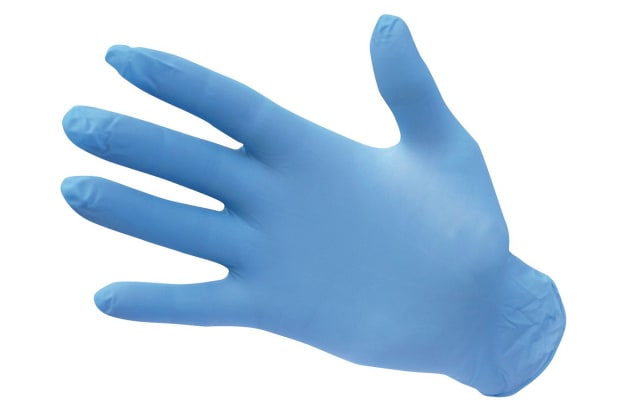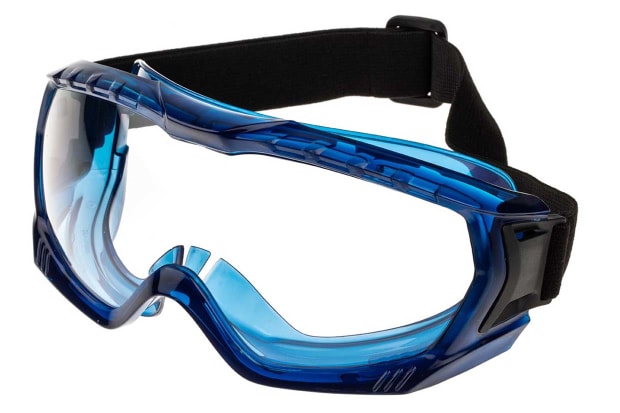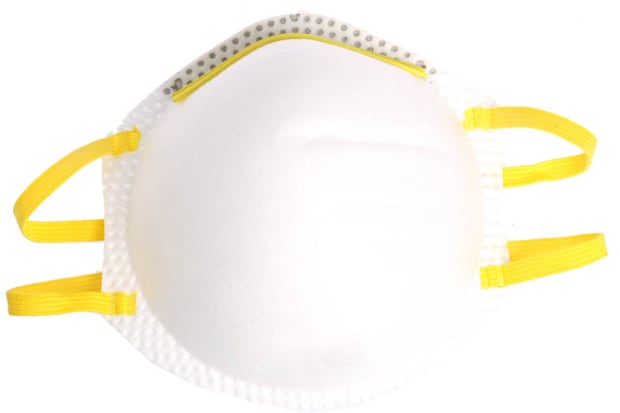- Published 10 Feb 2023
- Last Modified 14 May 2024
- 9 min
A Complete Guide to Epoxy Resin
Join us for an in-depth look at epoxy resins, how they are used, the common types and popular application methods.

Reviewed by Stephen Bettles, Technical Support Engineer (January 2021)
Epoxy resin is a versatile and highly adhesive material widely used in the construction, woodworking, and manufacturing industries. Its exceptional bonding properties, resistance to chemicals and moisture, and ability to withstand moderate temperatures make it a go-to choice for various applications.
From providing a waterproof barrier to heat resistance and high strength, epoxy resin offers a range of benefits. However, proper handling and safety precautions are crucial due to the potential hazards associated with certain formulations.
In this guide, we explore the uses, advantages, and limitations of epoxy resin, providing insights to help you harness its full potential in your projects.
What is Epoxy Resin?
Epoxy resin, also known as polyepoxide, is a type of adhesive used in a variety of applications and industries.
It has a particularly high level of flexural strength and is suitable for both domestic and commercial purposes. Formed of two parts, it is commonly mixed in ratios of between 2:1 and 4:1 resin to hardener. It also has the advantage of a particularly long pot life or working time, with the fast variety giving around 15 minutes of working time before gelling and the regular/slow variety expected to give roughly 100 minutes.
The positive qualities of epoxy resins include toughness, strong adhesion, and chemical resistance. Epoxy resin is used in a range of industries including construction and manufacturing. Additional uses include the building of electronic components such as fibre optics and electrical circuit boards.
How to Use Epoxy Resin Safely
When using epoxy resin, prioritise safety with these precautions:
- Wear nitrile gloves to shield your hands from resin and hardener liquids. Use baby wipes or a soap and water mixture to clean any resin that contacts your skin.
- Don a plastic apron to easily remove any spilled resin. Protect your eyes with safety goggles, and if resin gets in your eyes, flush with water for 15 minutes and seek medical attention.
- Ensure adequate ventilation by opening windows or using a ceiling fan. Consider wearing a respirator if ventilation is insufficient.
Browse some of the PPE you may need when using epoxy resin below:
What are the Different Types of Epoxy Resin?
Epoxy resin will fall under two principal categories - glycidyl or non-glycidyl. Glycidyl resins come under the subcategories of glycidyl-ether, glycidyl-ester, and glycidyl-amine. The non-glycidyl variety will either be aliphatic or cyclo-aliphatic. Glycidyl-ether epoxies are the most commonly used, particularly those of the bisphenol and novolac variety.
Bisphenol Epoxy Resins
Bisphenol-A diglycidyl ether (DGEBA) is a commonly used variety of commercial epoxy resin. It is produced as a result of the reaction of bisphenol-A on contact with epichlorohydrin in the presence of a basic catalyst. This variety of epoxy resin has the lowest molecular weight.
Aliphatic Epoxy Resins
These types of epoxy resins are produced either as a result of double bond epoxidation (involving cycloaliphatic epoxides and epoxidized vegetable oils) or reaction with epichlorohydrin (glycidyl ethers and esters). Cycloaliphatic epoxides feature one or more aliphatic ring in the molecule containing the oxirane ring. They have a defined aliphatic structure, high oxirane content, and absence of chlorine. This makes for low levels of viscosity, good weather resistance, low dielectric constants, and high Tg.
Novolac Epoxy Resins
These types of resins are produced as a result of contact and reaction between phenol and methanol (formaldehyde). The reaction of epichlorohydrin and novolacs results in the formation of novolacs with glycidl residues including epoxyphenol novolac (EPN) or epoxycresol novolac (ECN). Such epoxies do not contain solvents or volatile organic compounds. Being free of VOCs, they are extremely safe to use and respirators aren’t required. They have a relatively high level of adhesive strength, making for good levels of coverage. Protection and durability are also assured in the application of these resins.
Halogenated Epoxy Resins
These epoxy resins are admixed for special properties. This involves the application and mixture of brominated and fluorinated varieties. Brominated bisphenol A is the preferred option for flame resistance and electrical applications. However, the commercial production and use of such resins is limited due to the associated cost and low Tg.
Epoxy Resin Diluents
The creation of epoxy diluents involves the glycidylation of aliphatic alcohols or polyols. The materials produced as a result of such processes may be either monofunctional (e.g. dodecanol glycidyl ether), difunctional (butanediol diglycidyl ether), or higher functionality (e.g. trimethylolpropane triglycidyl ether).
Glycidylamine Epoxy Resins
These epoxy resins have relatively high levels of functionality and are formed as a result of the contact reaction between aromatic amines and epichlorohydrin. Industrial grades include triglycidyl-p-aminophenol (functionality 3) and N,N,N′,N′-tetraglycidyl-bis-(4-aminophenyl)-methane (functionality 4). They have a low-medium viscosity at room temperature, making them easier to process than EPN or ECN varieties.
Epoxy Putty
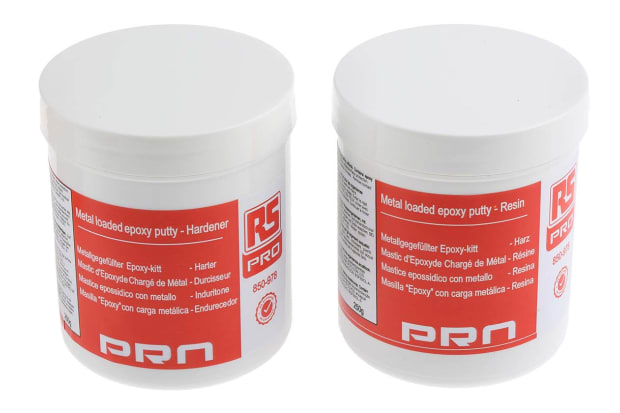
Epoxy putty may refer to any one of a collection of room-temperature hardening substances, used as space-filling adhesives. The compositions of such putty may vary, depending on the manufacturer and application. They perform the function of strong adhesive fills, which bind, set, and waterproof a variety of materials. The waterproof sealing is assured upon the application of epoxy putty.
Curing Time and Process for Epoxy Resin
To cure epoxy resin, it undergoes a reaction with curatives to form strong, cross-linked structures. Curing times vary but generally, a warm, slow, and long curing process is recommended for optimal results. Allow up to 72 hours for epoxy to set and form strong bonds, especially for high-pressure applications. Epoxy resin can cure through self-reaction or copolymerisation with various curatives like amines, acids, and phenols. Adding accelerators like tertiary amines can speed up the curing process.
Epoxy Resin Uses and Application Methods
There is a wide variety of uses for epoxy resin, including coating, adhesion, and the formation of composite materials including those using carbon fibre and fibreglass reinforcements. It is possible to alter the properties of epoxies such as silver-filled epoxies featuring high levels of electrical conductivity.
Consider the uses of the epoxy resin varieties highlighted in this content:
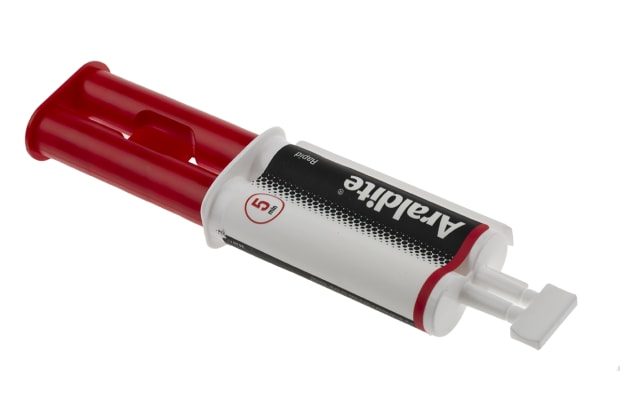
Araldite Rapid Epoxy Adhesive
Material Compatibility :
- Ceramics, wood, chipboard, glass, metal, most hard plastics
Epoxy Colour :
- Clear

Araldite Fusion Epoxy Adhesive
Material Compatibility :
- Ceramics, wood, glass, metal, hard plastics, stone, marble, leather, porcelain, brick, concrete
Epoxy Colour :
- Transparent
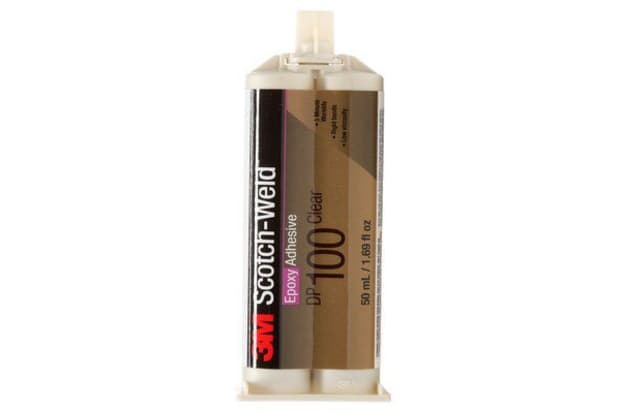
Scotch-Weld Epoxy Adhesive
Material Compatibility :
- Plastics, composites, metal
Epoxy Colour :
- Various
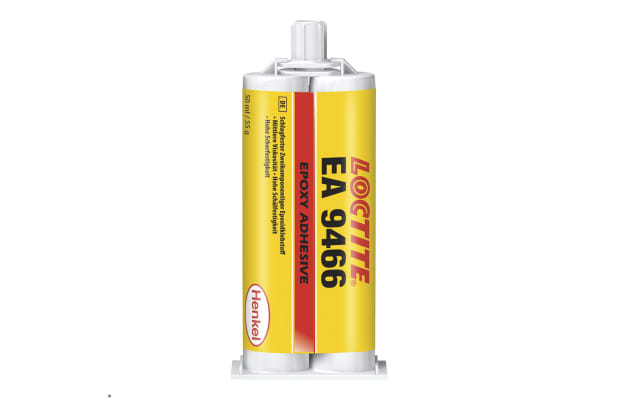
Loctite Hysol Epoxy Adhesive
Material Compatibility :
- Ceramics, metal, plastics
Epoxy Colour :
- Various
Epoxy Resin Adhesives
Epoxy adhesives fall under the category of structural adhesives or engineering adhesives, with chemical varieties including polyurethane, acrylic, and cyanoacrylate. Such adhesives may be used for the effective binding of aircraft parts, golf clubs, skis, and snowboards. They also allow for the strong adhesion of wood, metal, glass, stone and other materials. However, the adhesion won’t be as strong at temperatures in excess of 350°F (177°C).
Epoxy Resin Applications
Epoxy resin is a multifaceted material pivotal in numerous applications, from industrial manufacturing to personal crafting. Its uses range from epoxy resin in adhesives and composites to protective epoxy coatings in various environments. Epoxy resin’s adaptability makes it indispensable in both professional and hobbyist projects.
Epoxy Resin Uses for Industrial Tools
Epoxy resin can be used for the strong binding and production of tools such as moulds, master models, laminates, castings, and fixtures. Such plastic tooling is the ideal replacement for materials such as metal and wood. It allows for the achievement of greater efficiency and reduction in the expense and lead times for a range of industrial processes.
Epoxy Resin for Electrical Applications
Epoxy resin is commonly used by workers in the electrical industry for application in the building of motors, generators, transformers, insulators, and printed wiring boards (PWBs). The resins have high levels of electrical insulation and ensure the protection of components from short-circuiting due to the accumulation of dust and moisture.
Epoxy Resin for Consumers
The high levels of adhesion mean that epoxy resin is a popular consumer choice for the repair and maintenance of domestic objects. It allows for the relatively rapid and effective fixing of fragile items such as glass, ceramic, and china. It can also be used for the repair of domestic items made from materials such as wood, metal, and latex.
Epoxy Resin for Artwork and DIY
Epoxy resin can be combined with pigment for a variety of artistic applications. Layers may be added in the creation of a complete picture. Other common uses include the decoration of jewellery and decoupage of work surfaces.
Epoxy Coatings and Painting
Epoxy paint, otherwise known as epoxy floor coating, is commonly used for the coverage of garages, basements, and patio floors. Straight epoxy paint will feature a mixture of acrylic paint and epoxy of the one-part variety. Variations in colouring can be achieved through the application of acrylic epoxy paint, which dries in the same way as regular paint. This paint can be purchased in colours such as metallic blue and cream for an attractive finish.
The epoxy coating is made out of a compound, featuring the distinct elements of epoxy resin and polyamine hardener. The mixing of these elements results in a chemical reaction involving cross-linking during the curing process. Epoxy coatings provide a high level of protection against abrasion, turbulence, corrosive fluids, and extreme temperatures.
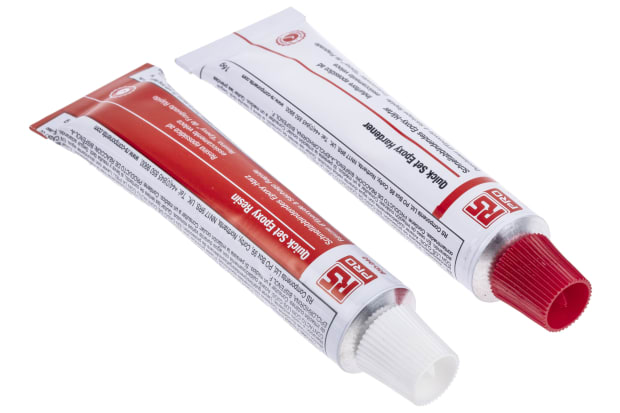
Benefits of Epoxy Coating:
- Durability
- Non-toxicity
- Weather resistance
- Impact resistance
- Chemical resistance
- Cleanliness and ease of maintenance
Frequently Asked Questions (FAQs)
Popular Epoxy Resin Brands:
Electrolube
With a diverse portfolio of seven epoxy resin products, Electrolube specializes in providing solutions for encapsulation, potting, and sealing in electronics manufacturing.
Related links
- A Comprehensive Guide to Solenoid Valves
- The Complete Guide To Portable Generators
- The Complete Guide To Touch Switches | RS
- The Complete Guide to Cutters
- Resins
- A Complete Guide to Uninterruptible Power Supplies (UPS) by Eaton
- Everything You Need To Know About Stepper Motors | RS
- Everything You Need To Know About Flow Switches | RS
